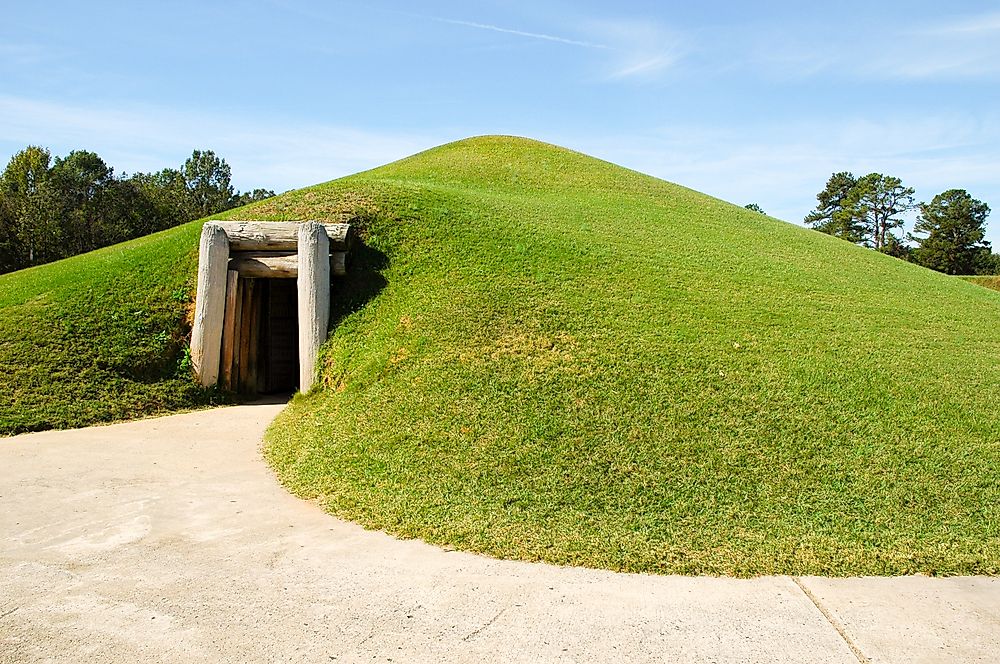What and Where Is Ocmulgee National Monument?

Ocmulgee National Monument is a collection of Native American mounds located along Ocmulgee River in Georgia, United States. The mounds display traces of the culture of the natives of the Southeastern United States. They are remnants of ancient and advanced communities that lived in Georgia thousands of years ago, such as the Paleo-Indians and Mississippians. Some of the earthworks date back as far as 1000 CE. The unique handiwork evident at the site showcases excellent soil knowledge, the unity of many laborers, and unmatched engineering skills. Hence, Ocmulgee National Monument is a significant archaeological and historical site. The history of the monument dates back to about 17,000 years ago.
Description
The Ocmulgee National Monument covers an area of 702 acres. It is managed by the United States National Park Service, which guarantees its federal protection. Ocmulgee National Monument consists of beautiful networks of trails, wildlife, fern-filled forest, and a domed ceremonial mound with a floor aged 1000 years. The hills at the monument have names including the Great Temple Mound, Funeral Mound, Cornfield Mound, and Southeast Mound. Additionally, the Earth Lodge contains spectacular interior views of the mounds of Ocmulgee National Monument. The visitor’s center at Ocmulgee includes an archaeology museum that displays several artifacts, cultures of the Native Americans, peoples of the colonial era, and the historic Creek people. Although part of the Ocmulgee National Monument, the Village Site and Lamar Mounds are located separately, 4.8 km south of Macon City.
History
There are three major phases in the history of the Ocmulgee National Monument: the Mississippian-culture phase, Lamar Phase, and Historic period. The Mississippian-culture phase occurred from approximately 950 until 1150. People who subscribed to this culture built mounds as an expression of their political and religious systems. Consequently, archaeologists named this period the Macon Plateau culture. It was characterized by skilled farming, soil construction, and land formation. It is believed that the Great Temple mound, rectangular wooden buildings, and circular earth lodges were built during this era.
The second phase, the Lamar Phase, is the period in which two mounds including the “spiral mound” which stills exists, were built. People who lived during this era also engaged in strikingly beautiful pottery. In 1540, Spanish explorers visited the Lamar sites. It is after Spanish exploration that the Mississippian cultures disappeared. During the Historic Period, the Creek Indians, also called Muscogee, lived in present-day Alabama and Georgia. The native peoples treated the Mississippian mounds as sacred places. In fact, they made pilgrimages to those sites.
Ocmulgee Wetlands
The Ocmulgee Wetlands are located along the Ocmulgee River and Walnut Creek. The wetlands are home to birds, reptiles, and plants. Visitors can walk along a boardwalk into the wetlands to experience the magnificence of the fauna and flora. Every year, a festival known as the Ocmulgee Indian Celebration is held to recognize the culture preserved at the Ocmulgee National Monument. The festival attracts more than 200 storytellers, artisans, dancers, and history demonstrators.











